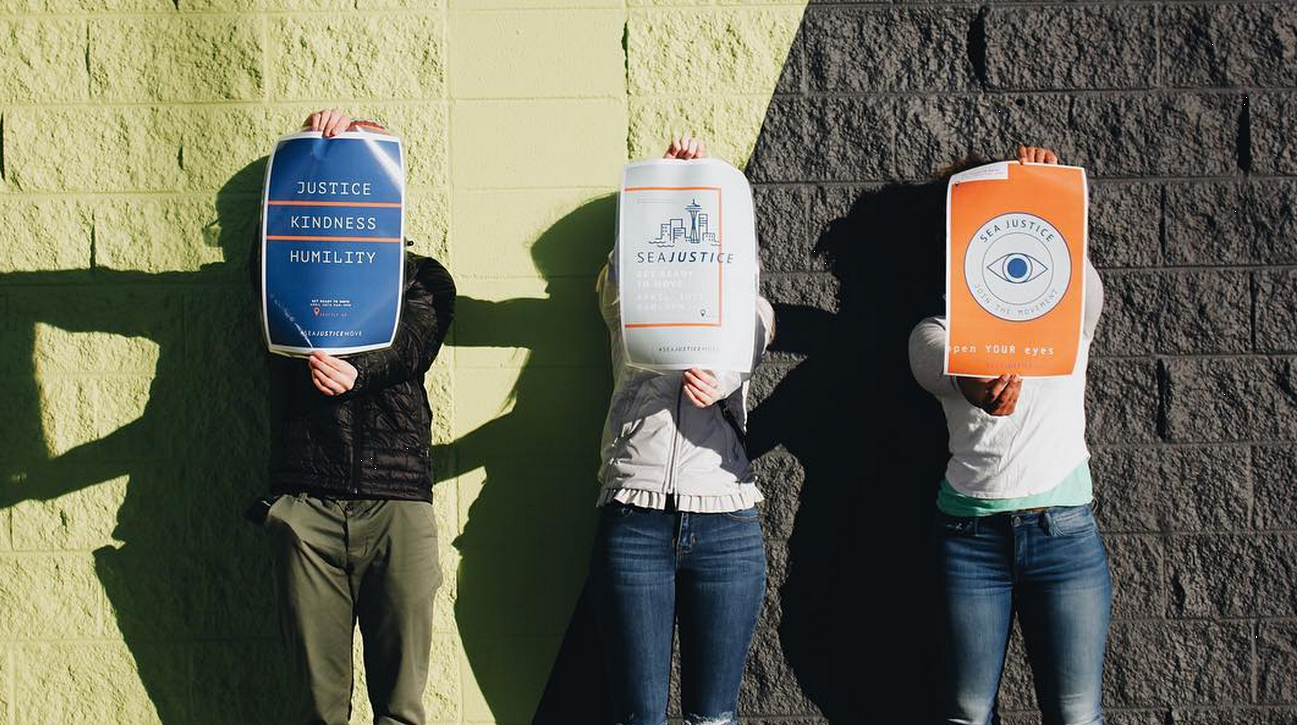King’s School Open House!
Your chance to learn if King’s School is the right fit for your family. Sunday, February 2, 2025 from 2:00-4:00pm!
RSVP Today!Learning Outside the Classroom
February 2, 2018

by American History and Social Justice Teacher Ryan Crane
I distinctly remember as a six-year-old driving with my mom to pick dad up from Sea-Tac Airport. On I-5 south, around Tukwila where the freeway bends sharply westward, a vehicle 200 feet ahead of us swerved out of its lane, then back into its lane. Suddenly the passenger side door of the swerving car swung open and a woman’s body was thrown out, across three lanes of freeway, ending up on the shoulder. With no cell phone, two boys in the backseat and a husband to pick up at the airport, my mom had to make a quick decision. Courageously, my mom pulled over, nursing the victim until help arrived.
If you were in my mom’s place, what could you do? What should you do? What would you actually do? As a witness to some sort of conflict or crisis, you have two fundamental options: do something or do nothing.
In 2018, one doesn’t have to venture far to witness conflict. Whether it be the grip of poverty on so many communities around the world, environmental degradation, or the trafficking of humans for sex on Aurora Avenue North, we are all bystanders to something. The question is: will we choose to do something, or do nothing?
Let me tell you about King’s Social Justice.
You can track the six-year journey of King’s Social Justice on our Instagram feed: @kingssocialjustice. Scrolling through six years of the moments in the collective journey of KSJ, the snapshots filling my screen illustrate what happens when young people engage injustice with curiosity and empathy. I see students advocating for an end to sex trafficking in Seattle and Champasak, Laos. I see students attending justice conferences in other states.
I see students planning a local justice conference, sharing their passions with 200 Seattle area high school and college aged students. I see students tirelessly inviting their peers at school into their Thursday afternoon sacred space where topics range from personal experiences with neglect and powerlessness to the importance of avoiding paternalism in the pursuit of human dignity.
If I could somehow physically return to each moment depicted in that Instagram feed, I would be overcome with admiration and inspiration for the young people who continue to choose to see the image of God in everyone. Most of us, including myself, can choose to avoid and ignore stigmatized people and places, yet when students remind me of the people and places that Jesus engaged with, we redirect our ears to those not being heard, our eyes to those not being seen.
It is often said that King’s Schools is a place where future community leaders are nurtured. This is true. The purpose of King’s Social Justice, whether through the regular and advanced courses offered; or through experiential trips to the borderlands of the United States and Mexico, the rural communities of Laos, and the urban centers of Seattle and Chicago, is to inspire and equip students to have eyes to see and ears to hear the stories of those on the margins, standing with and for the powerless, choosing engagement over apathy, moving from bystander to upstander.
What I see in the students of King’s Social Justice is a gathering movement of young leaders unsettled with the status quo, charting an unconventional, uncomfortable path toward the restoration of people and communities.
Toward peace,
Ryan Crane
Mr. Crane is in his sixth year as a teacher of American History and Social Justice at King’s High School. His greatest passion is “to provide opportunity for students to wrestle with topics of moral and ethical significance. I hope that students leave my class knowing that they are loved, that they have a voice, and that they can use their influence to bring dignity and equality to humanity.” He lives in Seattle with his wife, Marisa and feels alive when dancing, slowing down for flowers and playing the harmonica.